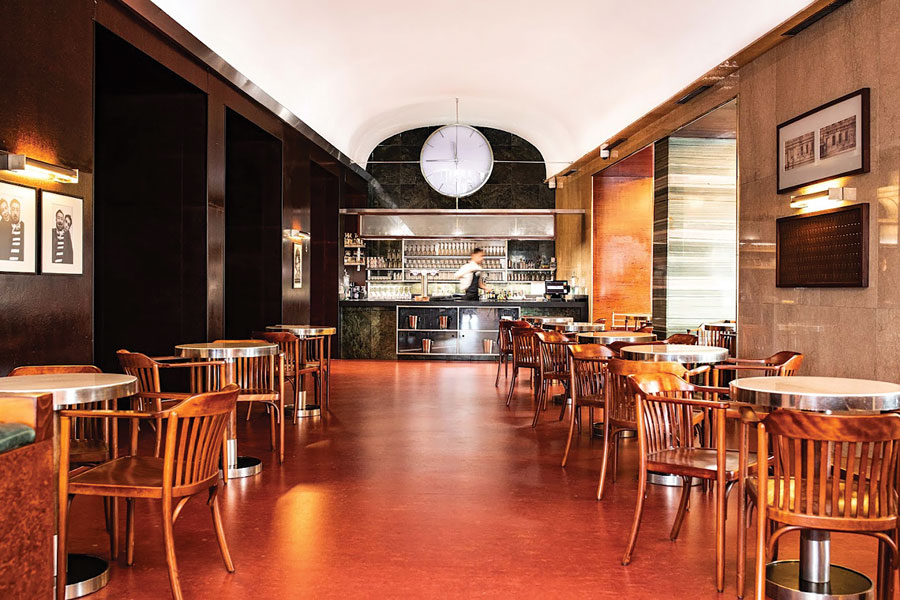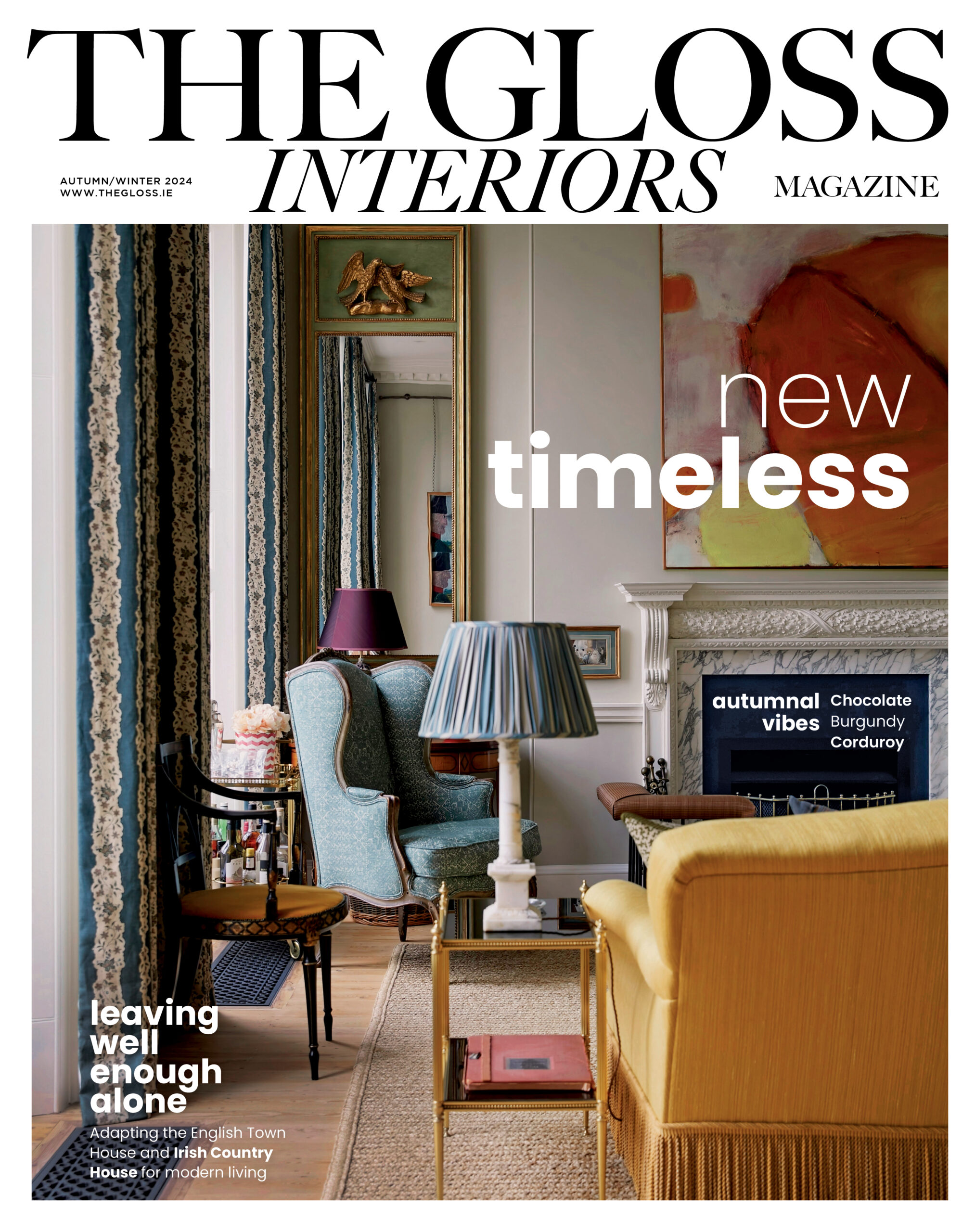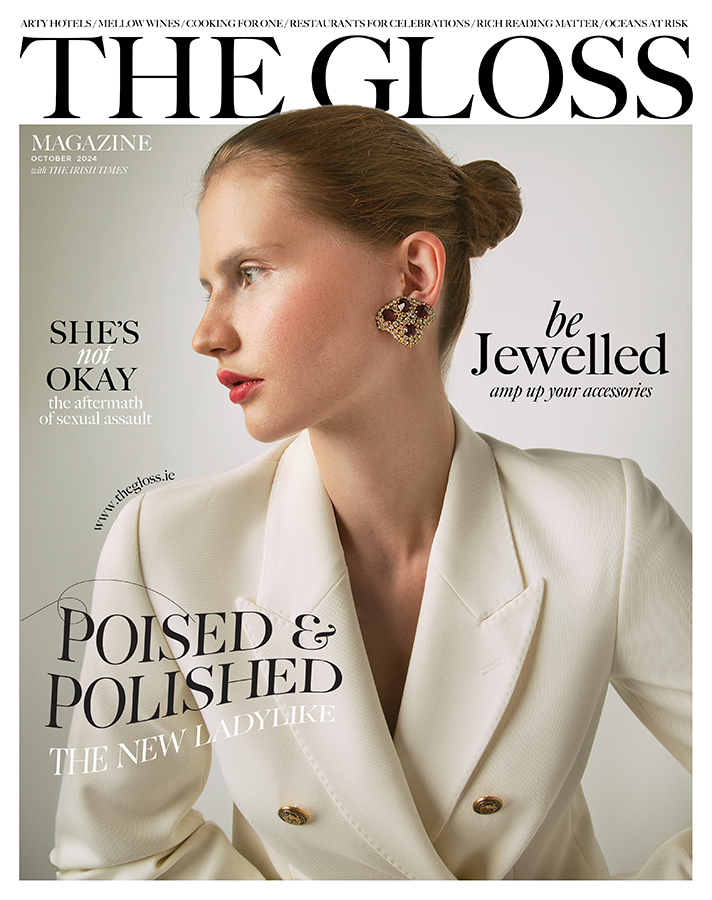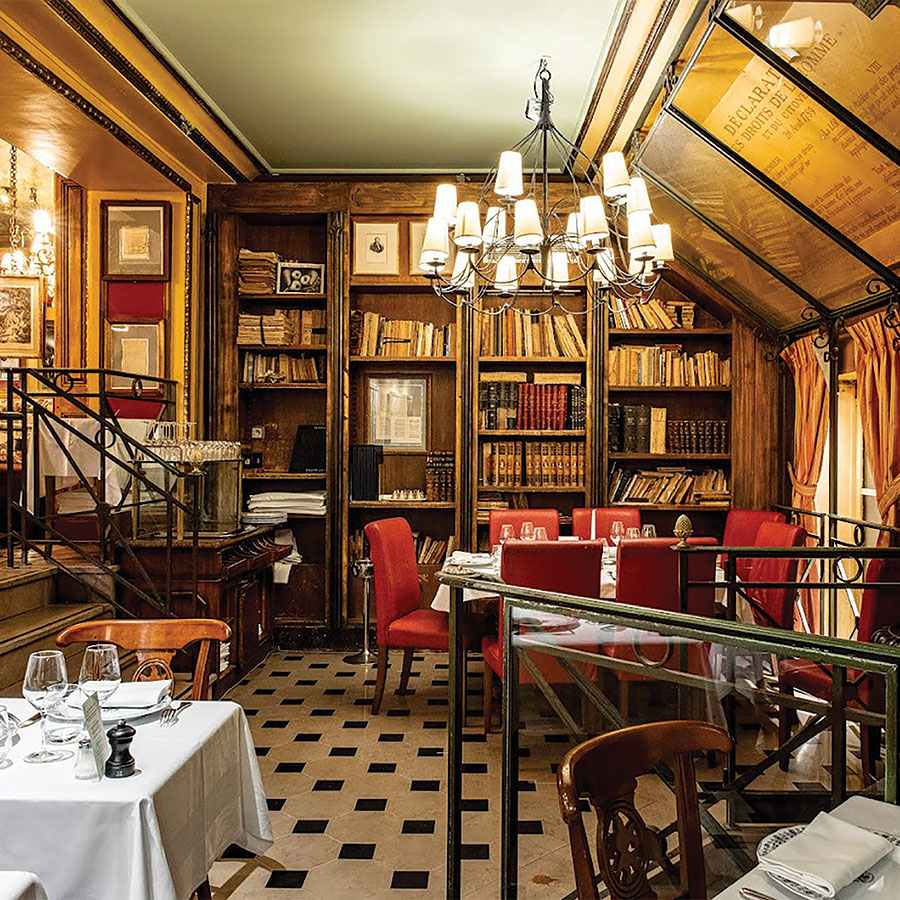Ciara McQuillan loves these must-visit literary cafés…
Now that we have arrived at what shall henceforth be known as “short break season”, the architecture and culture of Europe beckons. A hotbed and haven for writers, thinkers, globetrotters and of course, coffee-lovers, Europe is known for the vast number of grand cafés that opened after the arrival of coffee into Europe in the late 1600’s. Today these are not just places to sip a cappuccino but sanctuaries for creativity and time capsules offering a glimpse into the past.

LE PROCOPE, PARIS
The history: Stepping into Le Procope is like stepping into the pages of history. Established in 1686, it is the oldest continuously operating cafe in Paris, and perhaps, the world. Nestled in the heart of the Left Bank, Le Procope has hosted luminaries such as Voltaire, Rousseau, and Benjamin Franklin. The café: The walls inside the café are hung with vintage mirrors and chandeliers imparting a sense of grandeur that harks back to the Age of Enlightenment. On the menu, you will find French classics such as onion soup, snails and a range of coffee, pastries and ice cream that might result in some necessary belt adjustment. What else: Le Procope unveiled a new addition to the café in February this year with the opening of a grand Salon de Café-Glacier (coffee and ice-cream to you and I). Le Procope, 13 rue de l’Ancienne Comédie, Paris 75006, France, 0033140467900; www.procope.com.

CAFÉ SLAVIA, PRAGUE
The history: Situated in the heart of Prague, on the banks of the Vltava River, Café Slavia is reputedly the oldest café in the city. The café is an iconic establishment in Prague’s cultural landscape and has been the epicentre of Czech culture since its opening in 1884. The chosen spot for artists, writers, and intellectuals, writers Karel and Josef Capek, and art theorists Karel Teige and Václav Cerný, frequented the café. The café: The pared-back Art Deco interior is complemented by traditional specialties of the house: do not miss Czech pancakes, a cup of grog or an indulgent hot chocolate. Snag a window seat for stunning views of Prague Castle and the National Theatre. A breakfast of pancakes with sour cherry sauce, dark chocolate cream, pickled sour cherries and a chocolate cracker will start your day on a sweet note. What else: Café Slavia hosts regular literary readings, art exhibitions, and live piano music cementing its place as a vibrant hub of artistic and intellectual activity in the city. Café Slavia, Národní 1012/1, 110 00 Staré M?sto, Praha 1, Czech Republic, 00420777709145; www.cafeslavia.cz.

CAFÉ GUARANY, PORTO
The history: Established in 1933, Café Guarany was designed by architect Rogério de Azevedo who enlisted the help of sculptor Henrique Moreira. When it opened, Café Guarany became known as a place for business and cultural interactions, and a forum for political and philosophical ideas. Also known as the musicians’ coffee shop, Café Guarany is loved for its unique ambience and spirit which it continues to embody to this day. The café: Visit mid-morning for a pastel de nata, at lunchtime for the mammoth Francesinha sandwich with steak, thin smoked sausage, fresh sausage, ham, cheese, fried egg, French fries and special sauce or in the evening for a plate of cheese served with port. There is an in-house pianist in the evenings which adds to the old school ambiance. What else: The 1857 novel, The Guarani by José de Alencar tells the tale of the forbidden romance of Cecília, a Portuguese noblewoman, and Pery, the chief of a Guarany tribe from Brazil. This book would later inspire the opera, Il Guarany, which, in turn, went on to inspire the opening of Café Guarany in the city of Porto. Café Guarany, Avenida dos Aliados, 85/89, Porto, Portugal, 00351223321272; www.cafeguarany.com.

ANTICO CAFFÈ GRECO, ROME
The history: Rome, with its ancient ruins and timeless beauty, is without doubt a city that inspires. Antico Caffè Greco is a historic café that has been serving artists and writers since 1760 when it was founded by owner, ‘Nick the Greek’. The café has a rich artistic and literary heritage with former patrons including Keats, Shelley, and Goethe, whose portraits line the walls. The café: The interior of Antico Caffè Greco is a sight for sore eyes with its red velvet seats and marble tables resulting in an irresistible atmosphere of old-world elegance. The menu is quintessentially Italian with a range of coffees, pastries, and light meals. Enjoy an espresso while savouring a slice of torta caprese, a rich Italian chocolate and almond cake. What else: Located on the Via Condotti, Antico Caffè Greco is a stone’s throw from the Spanish Steps and perfectly positioned for shopping and sightseeing. Antico Caffè Greco, Via dei Condotti 86, Rome, Italy, 0039066791700; www.anticocaffegreco.eu.

NEW YORK CAFÉ, BUDAPEST
The history: In the heart of Budapest lies the New York Café, a stunning example of Italian Renaissance design that has been captivating visitors since 1894. The café has long been a haven for writers, artists, and intellectuals, including the likes of Hungarian poets Endre Ady and Gyula Krúdy. The most influential newspapers in the country were also edited in the upstairs gallery. The café: Known as “the most beautiful café in the world,” the opulent interior includes marble columns, gilded stucco, and frescoed ceilings that add a sense of drama and grandeur. New York Café’s menu showcases the best of Hungarian and international cuisine with pastries such as Dobos Torte along with hearty local dishes; Beef Goulash and Chicken Paprikash. What else: Today, New York Café continues to be a cultural landmark, hosting literary events, art exhibitions, and musical performances which keep the original café spirit alive. New York Café, Erzsébet Krt, 9-11, Budapest 1073, Hungary, 0036 1 8666 167; www.newyorkcafe.hu.






